Image List
-
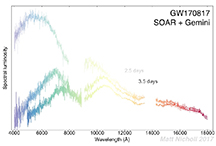
Video showing the spectroscopic evolution of the optical counterpart to GW170817. The transient begins blue, but quickly fades to a red color.
M. Nicholl / E. Berger / CfA -
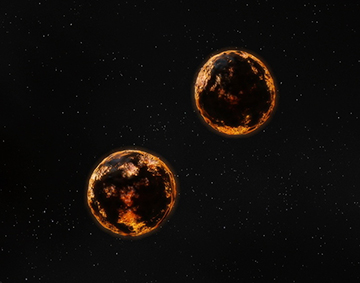
This animation shows how binary neutron stars warp space-time to create gravitational waves, then collide and explode into a visible kilonova, which can be detected by astronomers. It then pulls back to show the observatory in Chile that houses the Dark Energy Camera, the primary tool of the Dark Energy Survey, whose gravitational wave team was among the first scientific collaborations to observe this kilonova on Aug. 17, 2017.
Fermilab -

-

Interview with CfA astronomer Matt Nicholl
CfA, Pan-STARRS/IfA, DES Collaboration/DECam, SOAR/NSF/AURA, Gemini/NSF/AURA, Magellan/Carnegie Observatories -

Interview with Harvard graduate student Kate Alexander
CfA, DES Collaboration/DECam, VLA/NRAO/NSF -

-
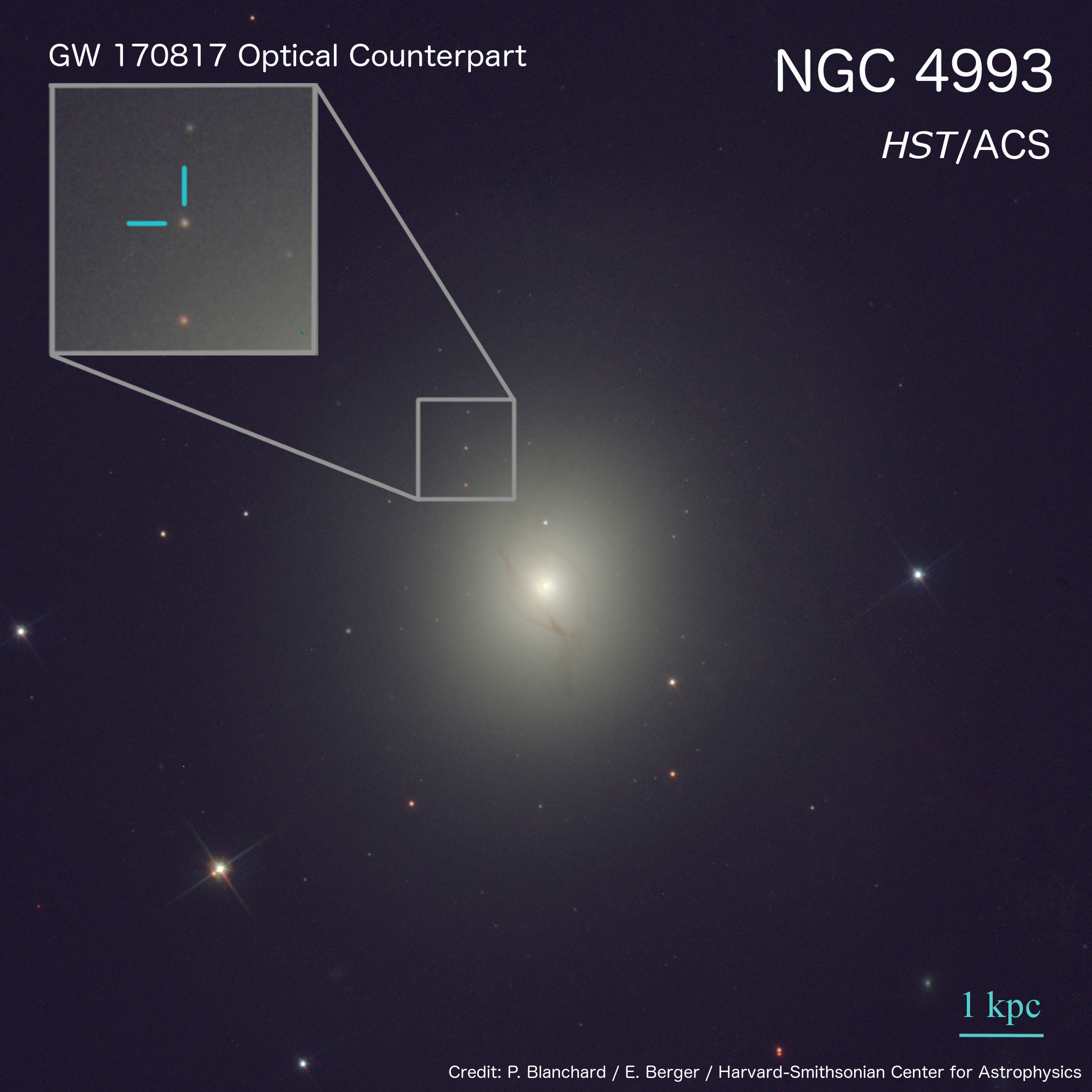
Hubble Space Telescope image NGC 4993, the host galaxy of the optical counterpart to GW170817. The inset shows the location of the optical counterpart, nine days after the discovery.
NASA/STScI/P. Blanchard / E. Berger / CfA -
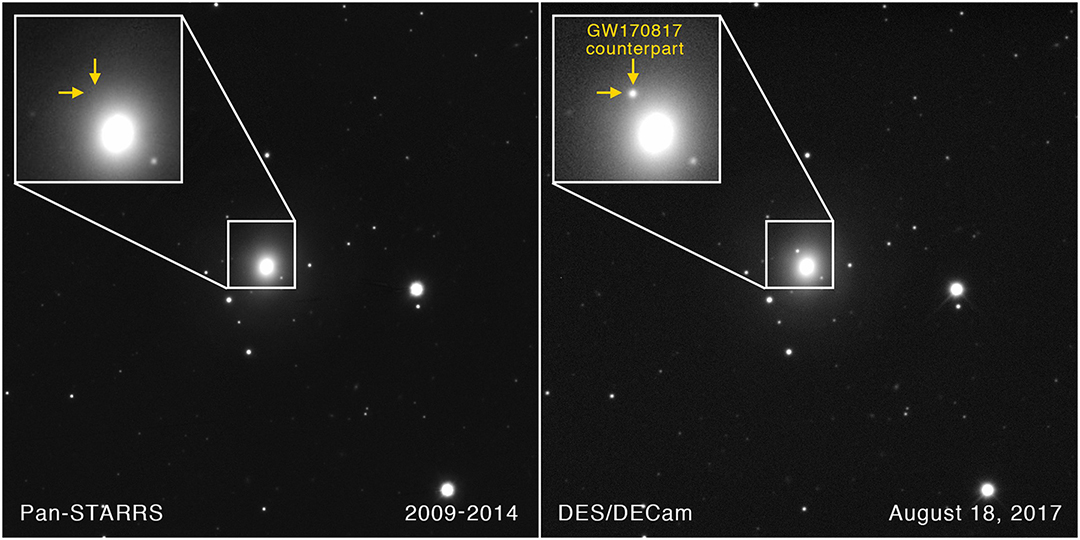
Left: Pre-discovery image of NGC 4993, with an inset showing the future location of the transient. Right: Dark Energy Camera discovery image of the optical counterpart to GW170817.
P. Blanchard / E. Berger / CfA -
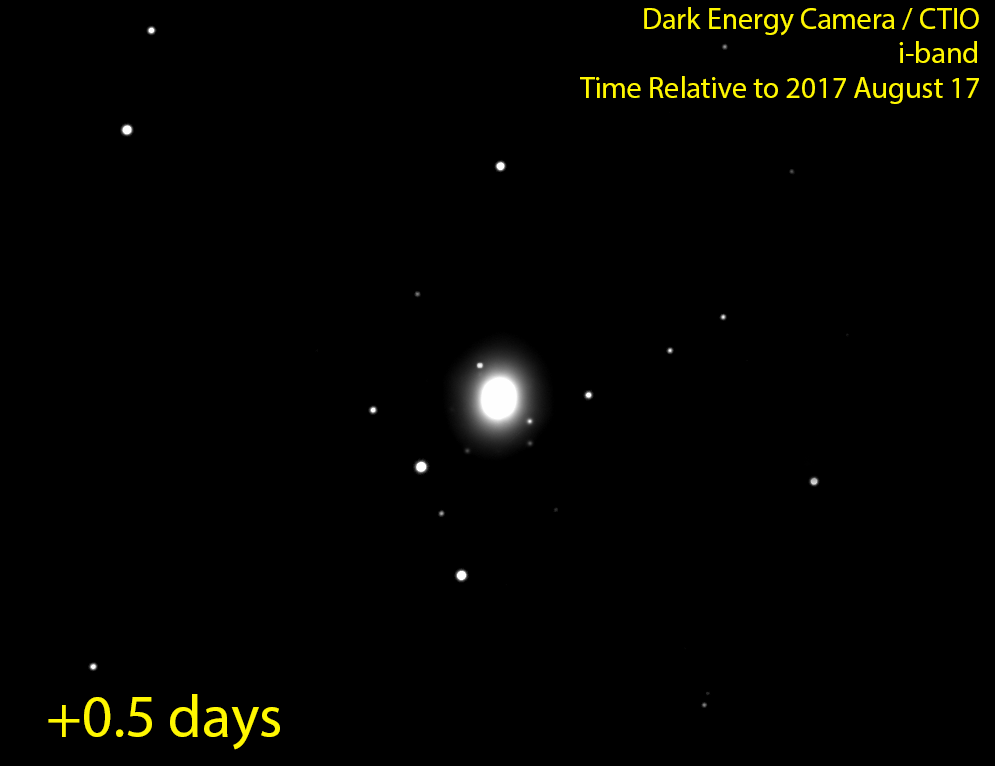
This movie, created using a sequence of i-band images obtained through our program with the Dark Energy Camera, demonstrates the rapid fading of the optical counterpart to GW170817. At twelve hours, the point source in the top left of the galaxy is clearly visible, but has almost completely faded away just a week later.
P.S. Cowperthwaite / E. Berger / CfA